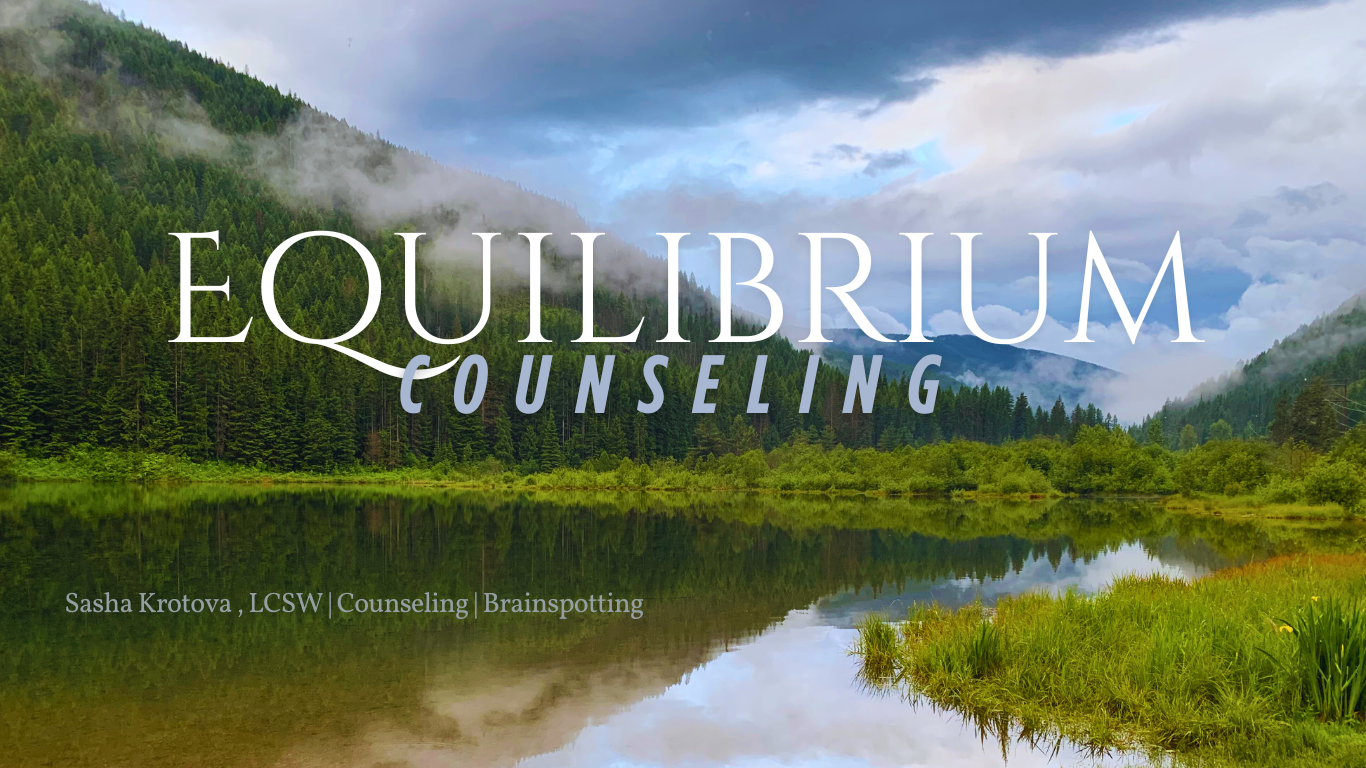Introduction: Get to Know Sasha
Hi, I’m Sasha and I am a Licensed Clinical Social Worker located in Sandpoint, ID. I see primarily women in my practice in Sandpoint, as well as across Idaho, Montana and Washington State via telehealth. The clients who see me often have some sort of unresolved or painful experiences (which I will call Deep Emotional Experiences) from their childhood and who in their adult lives, struggle with various issues such as symptoms of Anxiety, Depression, relational Issues, motivation or self esteem issues, trauma symptoms, and more. Often, my client report feeling “stuck” in their lives, not being able to be fully present for themselves or others. And they also know about all the right things to do to support themselves already such as talk therapy, meditation/mindfulness, coping skills, boundaries, etc. Are you one of them?
So how is my work different?
My therapeutic approach integrates the importance of therapeutic trust and relationship (attachment based) with experiential, emotion-focused, and psychodynamic methods which means I engage my clients in slowing down with their issues, symptoms, or problems to not only talk about them, but to also experience them in real time. It’s not too different perhaps, from other therapists, but the magic is in understanding this fascinating concept called Memory Reconsolidation.
What’s Memory Reconsolidation?
Memory Reconsolidation is a term that describes a process within our minds that we all have that if “unlocked” will allow for transformational change in therapy. Memory is either held Implicitly or Explicitly. Implicit memory is unconscious—it’s beyond what we “see” on the surface, it influences our behaviors and thoughts without awareness. Think: when you finally learned to drive a car, you don’t panic or get nervous every time you head to work if you can do it or not, you just do. Explicit memory on the other hand is the conscious recall of facts and events- such as “I know how to drive the car and the steps to do it to make sure I get to work on time” or recalling and remembering cherished times or birthdays.
Basically, how the process of Memory Reconsolidation can aid us in therapeutic change and effectiveness is by introducing new present experience into currently activated memories of past events, in order to allow of assimilation or release of those implicit, emotionally-charged learnings that end up creating our symptoms, problems, or issues.
Now, what does this mean or look like in the therapy room?
When we focus in on a symptom or problem you’d like to work on, we need clarity and investigation in when this symptom or problem shows up and what you may have learned in your earlier experiences (deep emotional experiences) or even traumas that may have created to protect you as a result of these learnings. Once we stay in that learning by evoking your emotional experience (activation), we can support the process in “changing” them through new emotional experiences that create equilibrium in your life.
Tell me more…
Allowing for our deeper, emotional knowings to come to light about what we experienced as our younger selves about how to survive or operate in our family systems have often been deep wired, or encapsulated into our nervous systems, which is why we catch ourselves repeating negative patterns we’ve tried so hard to change.
What if there was a way not to have to change your symptoms or issues through thinking differently, doing more coping skills (or learning more skills in general) and instead focusing on how we’ve learned to adapt to our lives through our emotional and relational experiences? And what if by doing so, we find that then new learning and adaptation (our ideal therapy goals and symptom reduction) may be reached?
By understanding these underlying motivations and adaptations driving your behaviors and emotions, we gain valuable insights into what has shaped your experiences—in order to access mental and emotional healing and growth.
In our therapy sessions, I support clients in learning how to have a natural curiosity about their inner worlds that go below the surface of what they may already know. And as a Certified Brainspotting Practitioner, we also work together towards enabling clients to reconnect with their bodies and regulate their nervous system on their terms. This method of focused mindfulness allows us to access and process emotions and encapsulated trauma memories in a way that promotes lasting change.
So what’s next?
Alongside this deep work, I believe in how authentic laughter and creativity can also play a vital role in therapy in strengthening the therapy process and experience. By weaving humor and metaphor into our sessions, we can ensure that the process feels organic while at the same time prioritizing your goals and having clarity on what you want to achieve. This isn’t just about check-ins!
If you would like to develop the ability to listen to yourself in new ways and release past shame, guilt, trauma and anxiety patterns from your present related to your present, I invite you to reach out.
Together, we can learn to navigate the complexities of your inner world, and work towards achieving the emotional equilibrium and fulfillment you are seeking.
